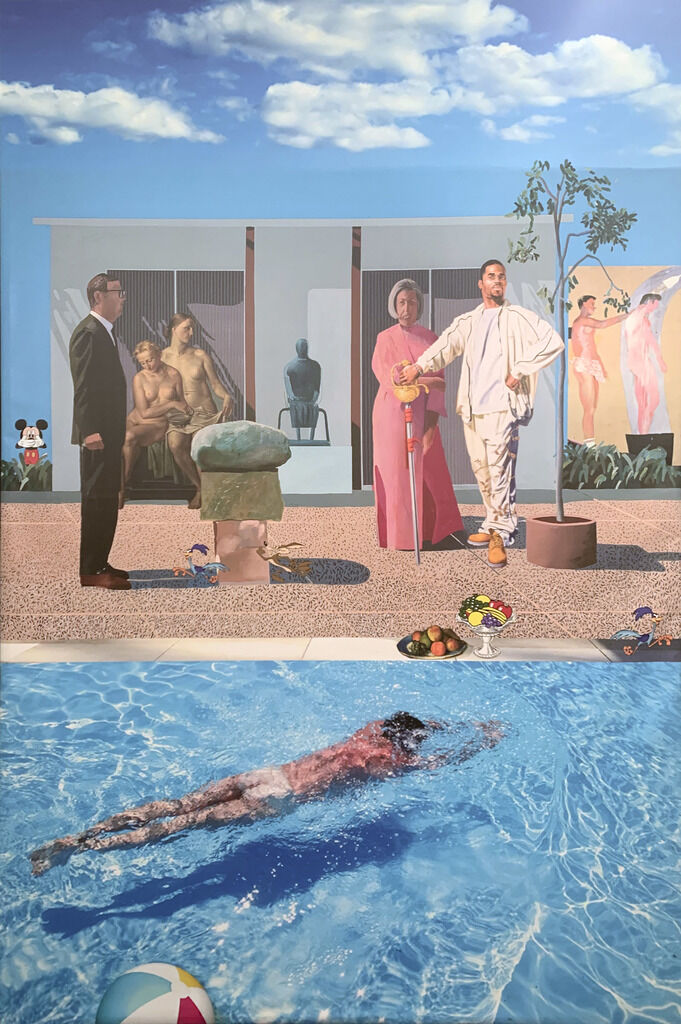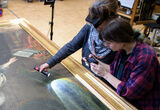Art Market
Three Factors to Guide Long-Term Planning for Your Art Collection
Art collecting is a passion sport pursued by many, and at many different price points. A nagging concern for some collectors is what to do with a collection ardently assembled over time, if or when their circumstances change. It’s a complicated question without a one-size-fits-all answer. The right approach will depend on family dynamics, tax and financial planning considerations, and the value and composition of the collection.
One of my clients gave me permission to share (on a disguised basis) the integrated plan we created last year for their collection. It serves as an example of all that’s involved in creating a pragmatic financial plan for a valuable art collection.
Setting the stage
Let’s start with some context. “Sally” and “John” started collecting in the early 1980s, when John began to make serious money. They felt post-war and
art was more accessible than European modernists or
, and so focused their collecting efforts there. They supported their local museum and traveled regularly to New York and other cities to visit galleries and museums. They developed relationships with a few trusted curators and turned to them for input and advice. After years of engagement, they stopped collecting about 10 years ago.
Now in their late seventies, Sally and John enjoy living with their collection, which is spread across three homes. They have three adult children, all of whom are financially independent. In addition to their real estate assets and art collection, they have a substantial investment portfolio.
While working with their trusts and estates lawyer and financial advisor to update their wills, they decided they needed to better incorporate their art collection into their legacy plan. That’s when I got involved to help them think through their options. The objective was to help them achieve peace of mind, knowing their collection was thoughtfully positioned for the future.
Understanding the collection
The first step in the process was to assess the value of the collection and any issues associated with the physical objects. John and Sally weren’t sure what their collection was worth after 10 years of not following the market actively. But it was relatively easy to “mark-to-market” the collection for financial planning purposes, because most of the artists in it were well known and regularly traded at auction.
The 90 objects in the collection were worth around $45 million. As is true for most collections, value was highly concentrated—just 15 artworks represented about 85 percent of the total value of the collection. The couple also had substantial long-term capital gains embedded in the collection: They spent about $4 million to acquire the works.
During this phase of the project, I noticed that two works had condition issues, which is not uncommon. One object was a $4-million painting that hung in their dining room. Like many collectors who get used to living with their art, they hadn’t noticed a food stain on the bottom of it. Luckily, we were able to find a conservator who specialized in work by that artist, who restored it back to its original condition.
Sally and John also owned a photograph by a living artist which had been damaged from excessive light exposure. It hung in a hallway with skylights. Without the light damage, the photograph would be worth around $400,000. But given its diminished state, it was now essentially worthless. I was able to negotiate a financial deal with the gallery that represented the artist to get the photograph reprinted. The artist supervised the process and signed the new work for a fee equal to approximately 10 percent of the fair-market-value of the work.
During this phase of the project, I also identified necessary changes to make in their art insurance policy, and put the updated policy out to bid via a broker specializing in fine art.
Goal setting
Once that work was done, we held several working sessions to discuss potential goals for their collection. Three factors helped set a direction.
First, none of their children lived lifestyles consistent with owning and displaying valuable art in their homes. All of them were also slated to receive substantial inheritances.
Second, if Sally and John gave the collection to their local museum, the museum would likely keep it in the basement, but for a small group of objects.
Lastly, the couple had enough liquid assets (i.e., stocks and bonds) so that the executor of their estate would not have to sell the art quickly to pay estate taxes.
Disposition plan
Armed with this information, we divided the collection into three parts. The first was called the “core collection” because it consisted of 25 objects worth approximately $35 million. All these objects would be held long-term and sold after the death of the surviving spouse. Sale proceeds were designated to go to charities important to the collectors.
Next, two valuable paintings were set aside to create a gifting currency. More specifically, the paintings were transferred into a single purpose limited liability company (LLC). Sally and John would annually gift shares in this LLC to their three children and seven grandkids. Across the 10 recipients, they would be able to remove $300,000 of value out of their estate each year. The two paintings we picked were easy to value, so the annual process for revaluing LLC shares would be very straightforward.
The remaining 63 objects in the collection were assigned to the “for sale” collection. We added a few valuable objects into the mix to make the “for sale” portfolio more interesting to auction houses. This would enable us to negotiate a better financial deal when sold. This sale would also be timed to allow my client to realize some losses in their venture capital portfolio. By doing so, they would be able to net capital gains on the collection sale with capital losses in their venture capital portfolio, lowering the capital gains taxes they would otherwise pay on the sale of the art.
A few other noteworthy flourishes were embedded in the plan. When the core collection is ultimately sold after both Sally and John have passed, sale proceeds will be distributed in an interesting way. Thirty percent is slated to be donated to their local museum. It’s their way of giving back to an institution they love. The museum is thrilled with the prospect of getting cash rather than art. The remaining 70 percent of sale proceeds will be put into a donor-advised fund. Their three adult children will then be tasked with distributing this money over 10 years to a shortlist of non-arts-related charities.
Sally and John are also downsizing. They will keep their New York City pied-à-terre, but are selling their other homes and plan to make Florida their primary residence. When this happens, two valuable paintings in the New York apartment will move to Florida so their value will not be subject to New York state estate taxes. But rather than looking at blank walls in the future, replicas are being created so the wonderful ambiance of the New York apartment is maintained. Technology now makes it possible to create replicas that the naked eye can’t distinguish from the original.
The Florida home will also be outfitted with state-of-the-art sensors so that light levels, humidity, and temperature can be monitored remotely from their iPhones. I also worked with the couple to rent short-term storage space they can elect to utilize on a moment’s notice so that when dangerous storms approach the Florida coast, they can be assured of being able to move artworks into a space on a high floor of a secure art storage facility.
Sally and John now have a plan for their collection that is specifically tailored to their personal goals for legacy and philanthropy. As you might imagine, cookie-cutter solutions don’t exist. But I hope this case brings alive what collectors can do to ensure that a collection passionately assembled over time is thoughtfully positioned for the future.
Three factors
Stepping back from the specific case of Sally and John, I believe collectors can assess whether they need a holistic financial plan for their collections based on three factors.
The first factor is the percentage of family wealth tied up in art. The higher that percentage, the more important it becomes to have an art-related financial plan.
Second, given the fundamental illiquidity of art, how liquid is the collector’s remaining balance sheet? If it’s similarly illiquid, perhaps because it’s invested in real estate and private equity, it becomes more important to have a plan for the art collection.
Lastly, how many objects are in the collection, and in how many different collecting categories? The larger and more diverse a collection, the more important it is to have a financial plan that reflects the idiosyncratic and nuanced marketplaces where objects in each collecting category are traded.
If you have any questions about the topics covered in this article or how they may apply to your personal situation, please contact me at dwoodham@artfiduciaryadvisors.com.
Doug Woodham is Managing Partner of Art Fiduciary Advisors, former President of Christie’s for the Americas, and author of Art Collecting Today: Market Insights for Everyone Passionate About Art.





